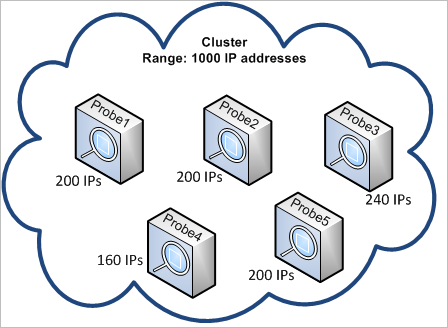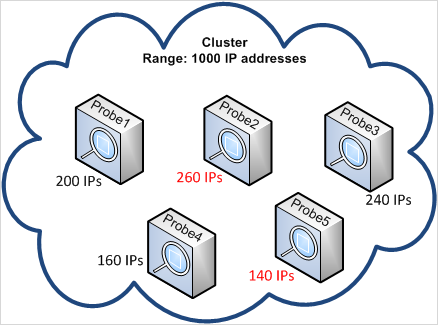Searching the Help
To search for information in the Help, type a word or phrase in the Search box. When you enter a group of words, OR is inferred. You can use Boolean operators to refine your search.
Results returned are case insensitive. However, results ranking takes case into account and assigns higher scores to case matches. Therefore, a search for "cats" followed by a search for "Cats" would return the same number of Help topics, but the order in which the topics are listed would be different.
| Search for | Example | Results |
|---|---|---|
| A single word | cat
|
Topics that contain the word "cat". You will also find its grammatical variations, such as "cats". |
|
A phrase. You can specify that the search results contain a specific phrase. |
"cat food" (quotation marks) |
Topics that contain the literal phrase "cat food" and all its grammatical variations. Without the quotation marks, the query is equivalent to specifying an OR operator, which finds topics with one of the individual words instead of the phrase. |
| Search for | Operator | Example |
|---|---|---|
|
Two or more words in the same topic |
|
|
| Either word in a topic |
|
|
| Topics that do not contain a specific word or phrase |
|
|
| Topics that contain one string and do not contain another | ^ (caret) |
cat ^ mouse
|
| A combination of search types | ( ) parentheses |
|
- Data Flow Probe Setup
- Data Flow Probes and Clusters
- UCMDB Integration Service
- Cluster Range Distribution Policy
- Limiting IP Movement in a Cluster
- Job Execution Policies
- Data Flow Probe Auto Upgrade
- Effects of Range Type on Discovery Workflows
- Using HTTPS Port 8453 as Default for Data Flow Probe
- How to Install a Second Data Flow Probe on a Windows Machine
- How to Set Master Key for Password Encryption on Data Flow Probe
- How to Add Data Flow Probes to UCMDB
- How to Add Probe Clusters to UCMDB
- How to Start a Data Flow Probe
- How to Stop a Data Flow Probe
- How to Change the Data Flow Probe Default Domain
- How to Change the Data Flow Probe Port
- How to Move Resources From One Domain to Another Domain
- How to Change the UCMDB Integration Service Default Domain
- How to Check the UCMDB Integration Service Status
- How to Limit IP Movement in a Cluster
- How to Update the Data Flow Probe's IP Address
- How to Update the Data Flow Probe Memory Size
- How to Define Owner Tenants on Data Flow Probes
- How to Configure the Number of Connections to Other Machines
- How to Configure Periodic Data Flow Task Updates
- How to Prevent Probes from Sending Touch Information Simultaneously
- How to Encrypt/Decrypt IP Ranges Information on the Probes
- How to Configure the Data Flow Probe to Automatically Delete CIs
- How to Delete Unsent Probe Results
- How to Clear Data Flow Probe Data
- How to Clear UCMDB Integration Service Data
- How to Deploy a Data Flow Probe CUP
- How to Deploy a Data Flow Probe CUP Manually
- How to Align the Data Flow Probe CUP with the UCMDB Server CUP
- How to Uninstall Probe CUPs Manually
- How to Set Maximum Objects for Insert Results
- Data Flow Probe Process Ports
- DataFlowProbe.properties File
- DataFlowProbe.properties Parameters
- DataFlowProbeOverride.properties File
- Data Flow Probe Database Scripts
- Data Flow Probe Log Files
- Data Flow Probe Setup User Interface
- Troubleshooting and Limitations
Limiting IP Movement in a Cluster
In a probe cluster, unassigned IPs are assigned to the cluster's Probes in such a way that the imbalance IP ratio among the Probes remains at a minimum. The imbalance ratio is governed by the imbalance threshold.
Changing the cluster's network range, changing the set of Probes associated with the cluster, or assigning a TQL constraint on a Probe in the cluster can cause an imbalance of IPs among the Probes in the cluster.
In such a situation, and depending on the IP imbalance threshold, the cluster attempts to re-balance the IPs among the cluster's Probes. That is, if one of the Probes violates the average number of IPs per Probe, as defined by the imbalance threshold, the cluster re-balances the IPs. If not, the cluster leaves the current IP distribution unchanged.
Example:
If a cluster has 5 Probes and 1000 IPs in its range, the average number of IPs per Probe should be 200.
If the imbalance threshold is set to 20%, then if each of the Probes has between 160-240 IPs, they do not violate the imbalance threshold, and no re-balancing is necessary.

If, however, there are Probes with less than 160 IPs, or more than 240 IPs (see image below)—that is, more than a 20% deviation from the average 200—the cluster attempts to re-balance the IPs among the Probes—as long as the TQL constraints on the Probes allow this.

For details on how to specify the imbalance threshold, see How to Limit IP Movement in a Cluster.











